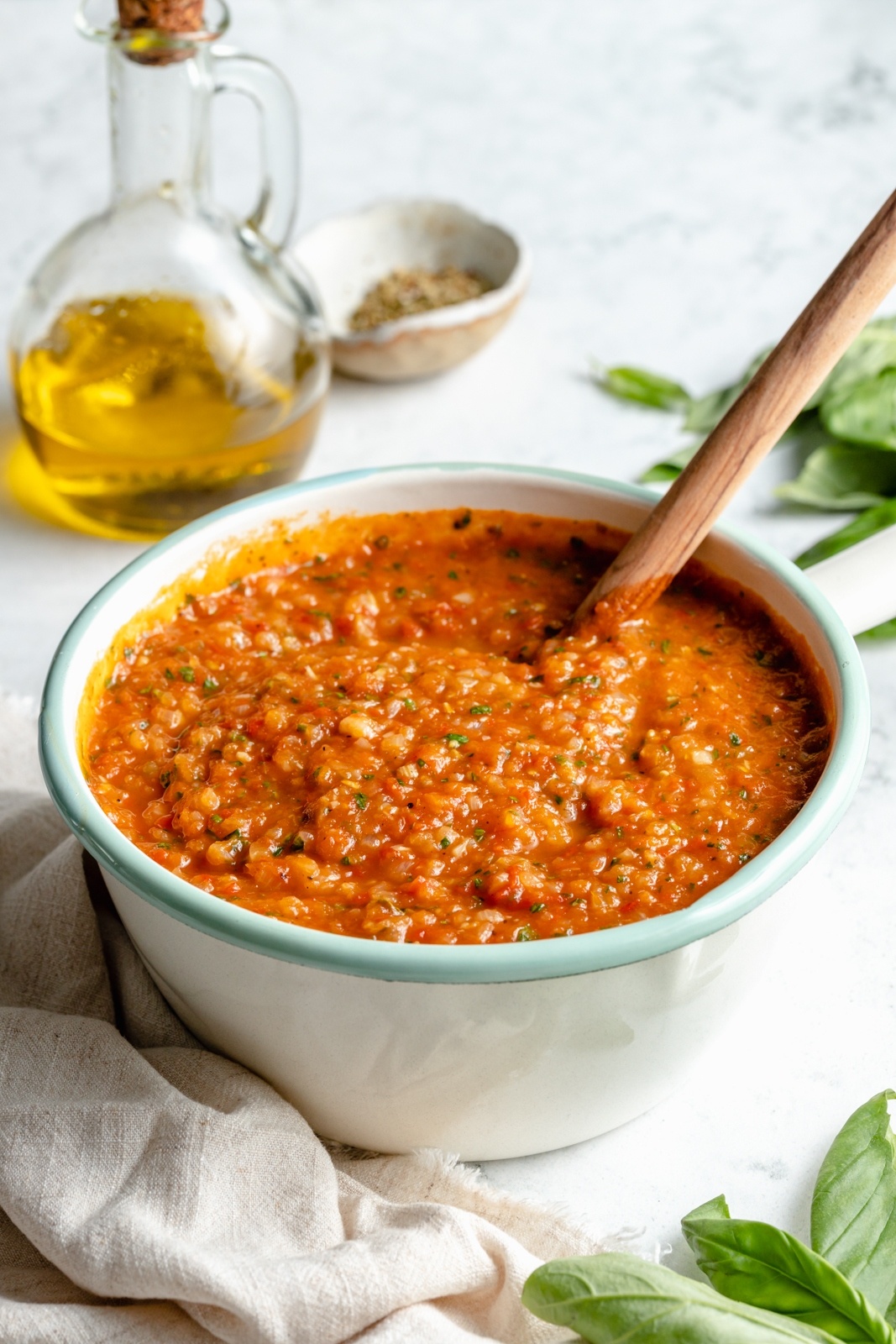Spaghetti Sauce With Fresh Tomatoes: Tips, Tricks, and Recipes
Fresh tomatoes bring vibrant colors and bold flavors to your spaghetti sauce. Using fresh tomatoes ensures that you avoid preservatives and artificial additives, making your meal healthier. Fresh tomatoes are rich in antioxidants, vitamins C and K, folate, and potassium, which boost your immune system and overall health. Preparing your sauce from scratch allows you to control the ingredients and customize the taste to your preferences.
Ideal Tomato Varieties for Sauce
Choosing the right tomato variety is crucial for a perfect sauce. Roma tomatoes are popular due to their low water content and dense flesh, which create a thicker sauce. San Marzano tomatoes, known for their sweetness and rich flavor, elevate your sauce’s taste. Cherry tomatoes add a burst of freshness, while heirloom tomatoes offer unique flavors and colors. Mixing different varieties can create a more complex and nuanced sauce.
Essential Ingredients for Spaghetti Sauce
Fresh Herbs and Their Roles
Fresh herbs elevate the flavor of your spaghetti sauce. Basil offers a sweet, pungent note that complements tomatoes well. Oregano provides an earthy, slightly bitter taste, essential for authentic Italian flavors. Parsley adds a mild peppery essence that balances the overall taste. Rosemary, with its pine-like aroma, infuses a robust and distinct character. Thyme introduces subtle, minty undertones, enriching the sauce’s complexity. Use these herbs in moderation to avoid overpowering the sauce while enhancing its natural flavors.
Choosing the Right Olive Oil
Choosing the right olive oil impacts the sauce’s richness and texture. Extra virgin olive oil retains more flavor and nutrients due to minimal processing. It’s perfect for adding depth and a fruity, slightly peppery taste. Light olive oil undergoes more refining, resulting in a neutral flavor, suitable if you prefer subtler oil notes. Use cold-pressed olive oil to maximize the health benefits, including antioxidants and healthy fats. Drizzle the oil during cooking or as a finishing touch for enhanced richness and a smooth, glossy finish.
Step-by-Step Guide to Making Spaghetti Sauce
Preparing the Tomatoes
Select ripe, firm tomatoes like Roma or San Marzano for optimal flavor and consistency. Wash them thoroughly under running water. To peel, score a small ‘X’ at the bottom of each tomato. Blanch tomatoes in boiling water for 30 seconds, then transfer to ice water. The skins will easily slip off. Cut tomatoes in half and remove seeds for a smoother sauce. Chop the deseeded tomatoes into small pieces.
Cooking Techniques and Time
Heat extra virgin olive oil in a large pot over medium heat. Add finely chopped onions and minced garlic when the oil shimmers. Sauté until onions turn translucent, approximately 5 minutes. Add chopped tomatoes, stirring to coat them in oil. Reduce heat to low and simmer, stirring occasionally, for 45-60 minutes. For a thicker sauce, cook longer, ensuring it’s not sticking to the pot. Add fresh basil, oregano, parsley, rosemary, and thyme during the last 10 minutes for maximum flavor infusion. Season with salt and pepper to taste.
Tips for Enhancing Your Sauce
Balancing Acidity and Sweetness
To balance acidity and sweetness in your spaghetti sauce, adjust the ratio of ingredients carefully. Tomatoes naturally possess acidity, which may need countering with added sweetness. Add a small amount of sugar—start with 1 teaspoon and adjust as necessary—to balance the sauce’s flavors. Consider using grated carrots; they add natural sweetness and enhance texture. Taste frequently during cooking to ensure a well-balanced flavor profile.
Secret Ingredients to Elevate Flavor
Incorporate secret ingredients to elevate your sauce’s flavor. Add a splash of red wine or balsamic vinegar for depth and complexity. A pinch of red pepper flakes can provide a subtle heat without overwhelming the dish. Freshly grated Parmesan cheese introduces a savory, umami element. Use a small piece of anchovy or a teaspoon of anchovy paste for a rich, tantalizing flavor that complements the tomatoes. Always taste and refine as needed to achieve the perfect balance.
Storing and Reusing Spaghetti Sauce
Best Practices for Storage
Store spaghetti sauce safely and maintain its flavor. Use airtight containers, and ensure they are clean and dry before adding the sauce. Keep sauce refrigerated if you plan to use it within 3 to 5 days; otherwise, freeze it to extend its shelf life up to 3 months.
Label containers with the date before storing to track freshness. To reheat, ensure the sauce reaches an internal temperature of 165°F (74°C) to eliminate any potential bacteria. Stir occasionally for even heating.
Creative Ways to Use Leftover Sauce
Maximize leftover spaghetti sauce by incorporating it into various dishes. Use it as a base for casseroles, such as lasagna or baked ziti, combining pasta and cheese for a rich meal. Add it to soups like minestrone or vegetable, enhancing flavor.
Create savory sandwiches or paninis by spreading sauce on bread and adding cheese and meats. Use it as a pizza sauce, spreading it on a crust and adding toppings. For a quick meal, simmer vegetables or meatballs in the sauce, creating a hearty dish.
Conclusion
Crafting your own spaghetti sauce with fresh tomatoes not only brings out the best flavors but also allows you to tailor it to your taste. By selecting the right tomatoes and incorporating fresh herbs and quality olive oil, you can create a sauce that’s both rich and flavorful. Remember to balance acidity and sweetness and don’t hesitate to experiment with secret ingredients for that extra touch.
Proper storage ensures you can enjoy your sauce for days or even weeks. Use airtight containers and label them for easy tracking. Reheat safely and get creative with leftovers to make your meals even more delightful. With these tips, your homemade spaghetti sauce will always be a hit.






